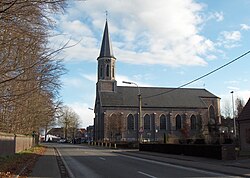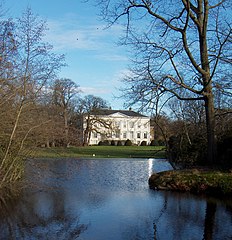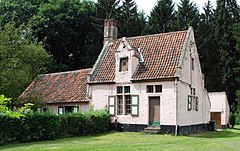
Ghent is a city and a municipality in the Flemish Region of Belgium. It is the capital and largest city of the East Flanders province, and the third largest in the country, after Brussels and Antwerp. It is a port and university city.

Temse is a municipality in East Flanders, Belgium.
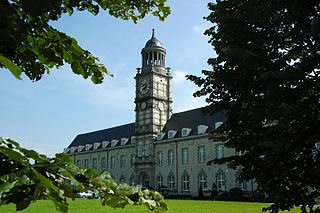
St. Bernard's Abbey, Hemiksem, or abbatiae S. Bernardi ad Scaldim, ordinis Cisterciensis, in dioecesi Antverpiensi also known as St. Bernard's Abbey on the Scheldt, located in Hemiksem in the province of Antwerp in Belgium, was a Cistercian monastery founded in 1243 and dissolved during the French Revolution. The buildings are now the property of the municipality of Hemiksem.
The Sint-Lievenscollege is a Catholic group of schools in Ghent, Belgium, composed of a number of elementary and primary schools, a secondary general school ('humaniora') and a secondary vocational trade school.

Herkenrode Abbey was a Catholic monastery of Cistercian nuns located in Kuringen, part of the municipality of Hasselt, which lies in the province of Limburg, Belgium.
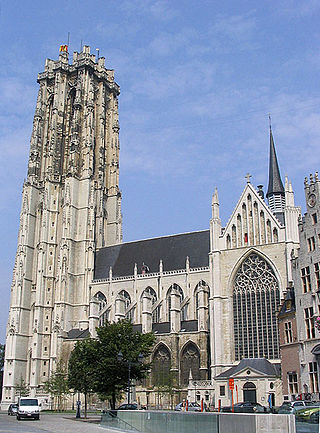
Brabantine Gothic, occasionally called Brabantian Gothic, is a significant variant of Gothic architecture that is typical for the Low Countries. It surfaced in the first half of the 14th century at St. Rumbold's Cathedral in the city of Mechelen.
Hugh I, of Ghent was lord of Heusden, Bornhem, and Saint-Jean Steene, Chatelain of Ghent. Hugh was the eldest child of Zeger III of Ghent and Beatrix of Heusden.

Ename Abbey (1063–1795) was a Benedictine monastery in the village of Ename, now a suburb of Oudenaarde. It was founded by Adele of France, wife of Baldwin V, Count of Flanders, and was confiscated during the French Revolutionary Wars. It was then sold and dismantled.

Nieuwenbosch Abbey, also Nieuwenbos Abbey was a Cistercian nunnery in Heusden, East Flanders, Belgium, later relocated to Ghent.
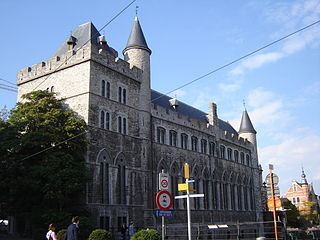
The Geeraard de Duivelsteen is a 13th century gothic architecture building in Ghent, Belgium. It served as defense of the Portus Ganda, the city's port.
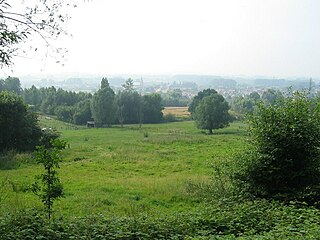
Ename is a Belgian village in the Flemish province of East Flanders. It stands on the right side of the river Scheldt and it is part of the municipality of Oudenaarde. The territory was inhabited during Prehistoric and Roman times, and became a trade settlement during the 10th century. From the 11th century it was part of the domain of the Benedictine abbey of Saint Salvator, until its 1795 dissolution in the aftermath of the French Revolution. The remains of the Saint Salvator abbey are today part of a major heritage project in Flanders, established by the Province of East-Flanders. The Provincial Archaeological Museum of Ename displays the major finds that have been excavated on the abbey site. Today the village of Ename hosts the Museumnacht in July and the Feeste t' Ename with the traditional horse market that has been held for centuries during the celebrations of the patron hallow Saint Laurentius, on the 10th of August.

Ten Duinen Abbey or the Abbey of the Dunes was a Cistercian monastery at Koksijde in what is now Belgium. It was one of the richest and most influential religious institutions in the medieval County of Flanders. It later relocated from Koksijde to the city of Bruges.

Saint Bavo's Abbey is a former abbey in the currently Belgian city of Ghent. It was founded in the 7th century by Saint Amand, who also founded Saint Peter's Abbey, Ghent, near the confluence of the Leie and Scheldt rivers. Originally, the abbey was also called Ganda, a name of Celtic origin, meaning "river mouth", referring to the Leie river debouching into the Scheldt river.

Lode Van Hecke OCSO is a Belgian Catholic prelate who serves as Bishop of Ghent. He was previously abbot of Orval Abbey from 2007 to November 2019. A monk since 1976, he is the only Trappist ever to be appointed bishop of a Belgian diocese.
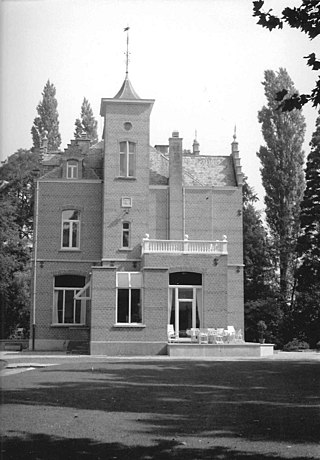
Heusden Castle is a historical site and castle in Heusden, Destelbergen, Belgium. The present structure was built in 1899 on the grounds of a former castle built in the 11th century. The above-ground parts of the old castle were demolished in the 18th century. The moat of the old castle still exists. In 1911, remains of what were probably dungeons were found, and parts of an older building near the moat were restored.

Ocket Castle is a house, on the site of a castle, in Heusden, Destelbergen, East Flanders, Belgium. It probably originated on the former fief of Grooten Hoek that lasted until the 15th century. The castle was depicted on a 1725 map by PJ Benthuys as a building with a moat near the Scheldt and is mentioned in 1767 as a "partije genaemt den grieten hoeck met de mote ende huys van playsance". The present Neoclassical building dates largely from the 18th and 19th centuries but contains a dining room on the east side that in the 17th/18th century was the core of the structure, as was established among other things from the beams and the Rococo stucco decorations.
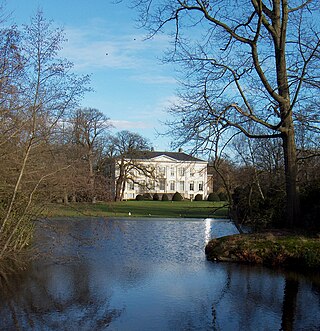
Castle Stas De Richele is a castle located in Heusden, Belgium.
Beatrix van Heusden was a Flemish viscountess. She was the daughter of Hughes of Heusden, son of Anselm III, Lord of Heusden.

Walburg Castle is a 16th-century castle in the East Flemish city of Sint-Niklaas.
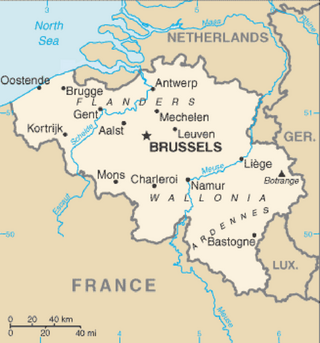
The Zeeschelde is a part of the Scheldt River, and is of great ecological importance. It is home to numerous water birds and the river is considered a nursery for marine fish. Many young fish use the Zeeschelde as a resting place, only to swim back out to sea a few months later. Sections of the river are under European protection as part of Natura 2000 "Scheldt and Durme estuary from the Dutch border to Ghent" (BE2300006).
